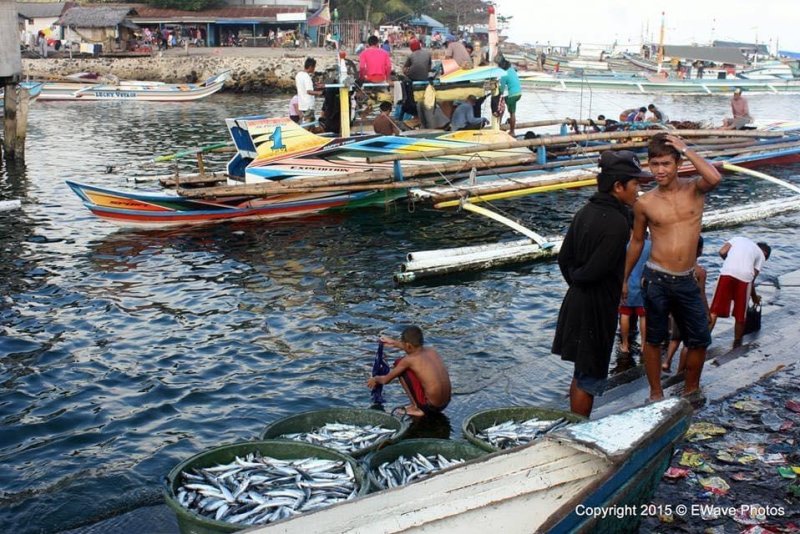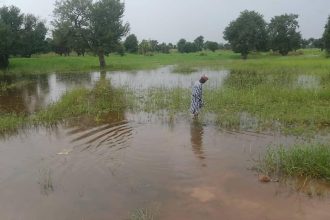Nov. 20 (UPI) — The United States and the Philippines are stepping up joint naval and marine to counter China’s expanding reach across disputed waters in Southeast Asia.
Under the Enhanced Defense Cooperation Agreement, the allies have added a new access site on Balabac Island at the southern tip of Palawan — strategically located between the South China Sea and the Sulu Sea.
The expanded cooperation underscores Washington’s effort to reinforce Manila’s defenses and mounting maritime pressure from Beijing.
But in the southern Philippines — from the Sulu Sea to the island provinces of Basilan and Tawi-Tawi — local fishers and Indigenous sea communities, like the Sama-Badjao, say the growing military presence has yet to bring real protection to their threatened livelihoods in their ancestral grounds.
While the Balabac site enhances surveillance of China’s maritime pressure in the West Philippine Sea, the greater challenge lies in safeguarding artisanal fishers in the Sulu corridor, where Chinese vessels continue to shadow, harass and outcompete local boats, often within sight of Philippine shores.
Samu-Badjas works his trade in the Sulu Sea. Photo by Yolanda Ortega Stern/One World Institute
“There’s been some improvement in the security situation in the Sulu archipelago to combat transnational crimes like kidnapping, robbery, piracy and trafficking,” said Lucio Pitlo III, a research fellow at the Asia-Pacific Pathways to Progress Foundation. But he added that the Chinese fishing in the Sulu Sea is less known, given the waters’ historical association with piracy.
Regional defense and maritime reports indicate that unidentified or unmarked vessels — many believed to be Chinese or operating under “flags of convenience”– routinely transit the Sibutu Strait and adjoining waters of the Basilan and Sulu Seas without prior coordination with Philippine maritime authorities.
Expanded alliance, limited reach
Washington’s Indo-Pacific strategy has shifted markedly since the Trump administration’s hard-edged approach to China.
The new Balabac facility at the southern tip of Palawan is meant to close a critical surveillance gap, giving the Philippines radar reach and rapid-response capability across its southwestern frontier – including the Sulu and Celebes Seas, where illegal fishing, unmarked vessels and gray-zone incursions persist.
China’s shadow in southern waters
Scarborough Shoal has long been more than a disputed reef — it is a litmus test for how the world reacts when international norms are bent by force. Now, analysts say China’s gray-zone tactics are quietly migrating south into the Sulu basin, where coverage is sparse, enforcement is weak and global attention is minimal.
Policy experts in Manila warn that these southern waters are emerging as the “soft underbelly” of Philippine maritime strategy. They say that China views the Sulu and Basilan corridors as permissive zones to test pressure on unprotected communities such as the Badjao, who have no state protection and depend on open access to the sea.
“The Balabac site allows rapid deployment for disaster response and enhances monitoring in southern waters,” a U.S. official told UPI. But Filipino security analysts argue that the site’s deeper purpose is to push back against Beijing’s encroachment — a form of low-intensity contest waged through fleets rather than firepower.
On the water, the Chinese presence remains visible. Although international attention continues to focus on Scarborough Shoal and the Spratly Islands, Chinese distant-water fishing fleets are now venturing farther south into the Sulu and Celebes Seas.
Operating in dense clusters, the vessels crowd out local fishers and complicate regional enforcement efforts.
“We see them with bigger lights and bigger nets,” said a fisherman from Tawi-Tawi, who asked not to be identified. “There’s no coast guard here — only us.”
China has denied deploying state-linked fishing flotillas beyond its recognized exclusive economic zone, but satellite data reviewed by maritime research groups shows intermittent, large-scale trawling near Philippine waters.
Maritime analysts warn that without stronger coastal enforcement and sustained regional patrols, such incidents will continue to erode confidence in the Philippines’ ability to protect its own fishermen.
While the Balabac site strengthens surveillance across the region, major gaps persist in protecting southern fishing communities.
“The U.S.-Philippine alliance is strategic,” said Collin Koh, a maritime security fellow at Singapore’s S. Rajaratnam School. “But even with stepped-up patrols to counter Beijing’s intimidation, fishers along Palawan, Zambales and the western seaboard are still navigating real risks at sea.”
Widening security-development gap
The Sulu and Celebes Seas — long marked by piracy, smuggling and insurgent activity — remain among Southeast Asia’s toughest waters to police, even without rising great-power friction.
For generations, the Sama-Badjao, often described as “sea nomads,” have lived aboard wooden houseboats and fished for reef species, octopus and sea cucumbers. But as fish stocks decline and security patrols expand, many are being forced closer to shore, eroding access to the traditional livelihoods that sustained their communities.
Philippine Coast Guard Western Sulu Station Commander Al-Hafidz T. Bih told UPI that maritime safety “is not only a law — it is a shared responsibility. The sea connects us all, and safety must be the language we share.”
His comments reflect a growing recognition among Philippine maritime authorities that stronger coastal coordination, not just military buildup, is essential to safeguarding lives and livelihoods in the country’s southern waters.
Development efforts aimed at lifting Indigenous sea communities have not kept pace with expanding security spending. As Manila and Washington pour resources into new military sites, southern Mindanao remains among the Philippines’ poorest regions, with limited access to basic services and economic opportunity.
“The real threat to stability here is economic exclusion,” said Yolanda Ortega Stern, co-founder of the One World Institute and the first Filipino American dual citizen from Mindanao. “You can build more bases, but people need boats, education and markets.”
Training, not transformation
Last month, the United States launched a three-year maritime training initiative with the Philippine Coast Guard to strengthen patrol capacity and crisis coordination. The program includes technical exchanges, command-and-control upgrades and joint exercises focused on law enforcement rather than combat.
It is part of a broader regional effort under the Indo-Pacific Maritime Security Initiative to help Southeast Asian partners resist coercion at sea.
Defense analysts say the training marks progress, but caution against expecting immediate results.
“Balabac offers surveillance reach; training offers skills. But it will take years before coastal governance and fisheries enforcement catch up with geopolitical competition,” said maritime scholar Jay Batongbacal of the University of the Philippines.
In response, Manila and Washington have expanded coordinated patrols and coast guard exchanges aimed at deterring foreign incursions and improving maritime domain awareness. But defense analysts say the scale of the challenge in the southern corridor — with its scattered islands, porous borders and limited radar coverage — continues to outpace both nations’ enforcement capacity.
Local civil society groups say the Badjao and other coastal families are being squeezed between great-power rivalry and a fast-declining marine environment. Pollution, overfishing and illegal gear are stripping what’s left of the Sulu Sea’s fragile habitats, leaving traditional fishers with fewer places to work and fewer species to harvest.
For communities like the Badjao, those geopolitical currents feel distant. Their reality is the daily scramble for a safe launch and a modest catch in contested waters.
Most mornings, they still push their narrow outriggers into seas now crowded by naval drills, commercial trawlers and territorial patrols — a dangerous convergence that leaves little room for the people who have been here the longest.









